Truth is, most self-defense scenarios happen during the daytime. While the classic image of a burglar is that of a ski masked thug working in the dead of night, the majority of burglaries actually occur between 6am and 6pm. This is because most criminals would rather enter a house when no one is inside to complicate their plan (i.e. shoot them). What’s more, the sunny months of July and August are the most popular for burglaries. People spend more time outside during high summer, and neglect to close their windows when they do. This attracts burglars just like it does flies!
Muggings take place pretty steadily around clock, but they are also more frequent in the daytime. The takeaway from these facts is that if you ever have to draw your handgun, you’ll probably be able to see its sights clearly.
But wouldn’t you rather be prepared to defend yourself and your own during any time of day? We have a strong feeling that your answer is yes. That is why you should consider outfitting your home defense or carry weapon with night sights.
Why Use Night Sights?
True to their name, night sights make it easier to shoot accurately in the dark. Night sights are not to be confused with a pistol-mounted flashlight. While that device obviously makes it easier to see, it doesn’t illuminate the sights themselves.
In general, aftermarket night sights are universally superior to factory sights. Training with a variety of pistols that are all outfitted with the same night sights will yield more effective results. Night sights can take on virtually any color, giving you a degree of customization. Night sights don’t compromise your ability to aim in the daytime, and they are much easier to see against bright muzzle flash when it is dark out. Furthermore, night sights may make it easier to locate your pistol when you need to find it.
All in all, there are no drawbacks to night sights — only benefits. But which night sights should you choose?
Types of Night Sights
Tritium Sights
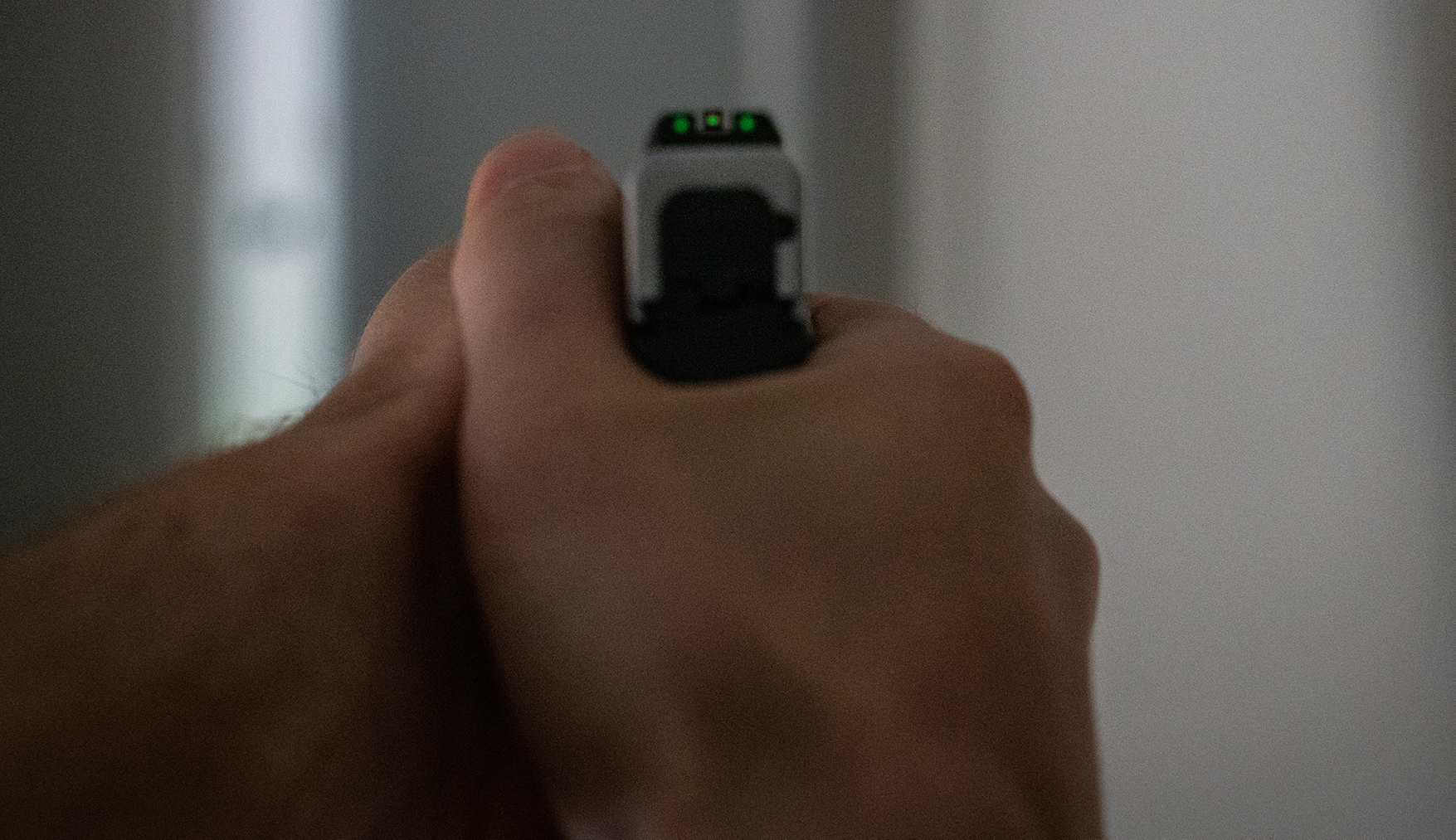
Tritium is a radioactive isotope of hydrogen. Now, don’t get nervous when you read the word “radioactive” — tritium’s radiation is so weak that it can’t hurt you. Tritium’s energy source is intrinsic, so it doesn’t need charging or prior exposure to light in order to work. That means if you keep your handgun holstered or in a nightstand drawer, its tritium sights will still glow when you take it out. Tritium’s glow is imperceptible when there is adequate environmental light, so tritium sights look like conventional dots in the daytime.
How Long Do Night Sights Last?
The important thing to keep in mind about tritium sights is that they will gradually lose their effect over time. The half-life of tritium is about 12.5 years, so in a little over a decade tritium sights will glow only half as brightly as when they were first made. If you buy a used handgun with tritium sights already installed, their replacement is in order.
Photoluminescent Sights

You’re already familiar with how photoluminescent sights work if you’ve ever owned a glow-in-the-dark watch. In contrast to tritium sights which store their own energy, photoluminescent sights absorb energy from an external light source and then emit light for a time afterward.
Photoluminescent sights can glow for up to eight hours, and charge at different rates depending on their light source. Under direct sunlight they can achieve their full potential in seven minutes; under incandescent light, they’ll need more than 20 minutes to achieve the same effect. Photoluminescent sights can remain potent for more than three decades.
Photoluminescent sights are generally inexpensive, but their chief drawback is obvious: Without recent exposure to light, they will not glow. If you keep your handgun holstered or stored away somewhere, its photoluminescent sights’ ability to emit light will be moot.
Fiber Optic Sights
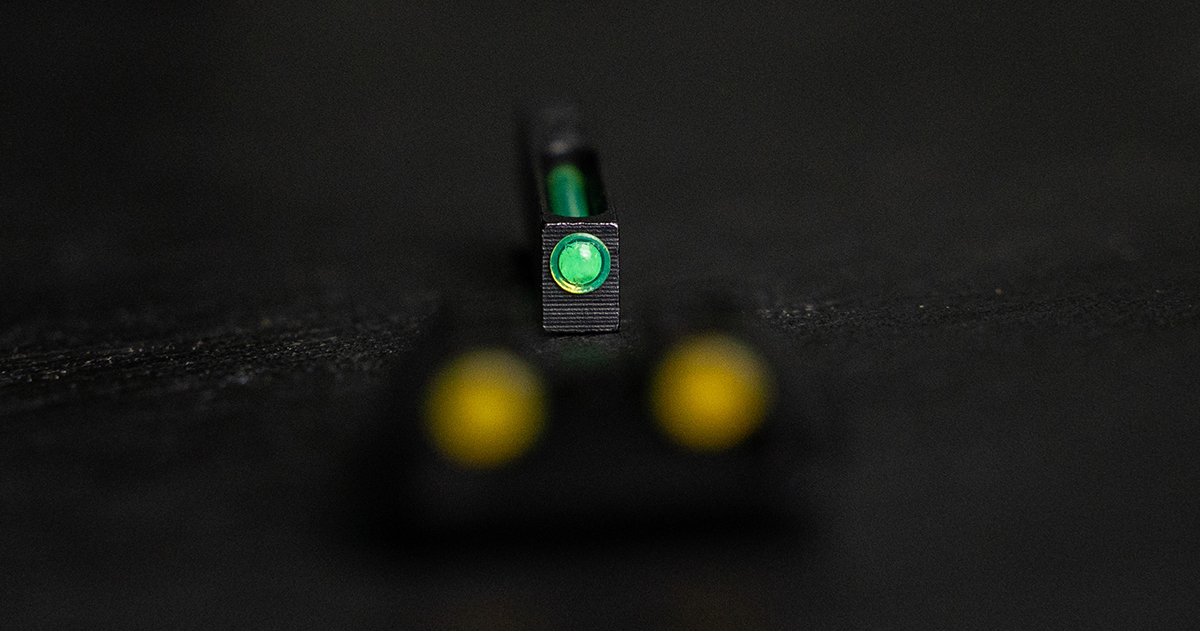
These TruGlo sights have tritium rear sights with a fiber optic front sight.
“Optical fiber” is fancier than it sounds. It’s simply a string of brightly colored glass or plastic that captures and transmits light throughout its length. Fiber optic sights are made of thin tubes of this material, which makes them highly visible even in situations with less light.
Fiber optic sights are available in a wide range of colors, and they are generally less expensive than tritium. While some believe that fiber optic sights are too fragile for a carry weapon, when installed properly they are able to withstand substantial abuse.
Fiber optic sights depend entirely on an external light source in order to illuminate themselves. When it is very dark, they will provide no greater visibility than conventional sights. You may not want to rely on fiber optic sights exclusively during a nighttime self-defense scenario, but they are highly effective when combined with tritium. TRUGLO sights have both tritium and fiber optic components to provide the best of both worlds.
Laser Sights
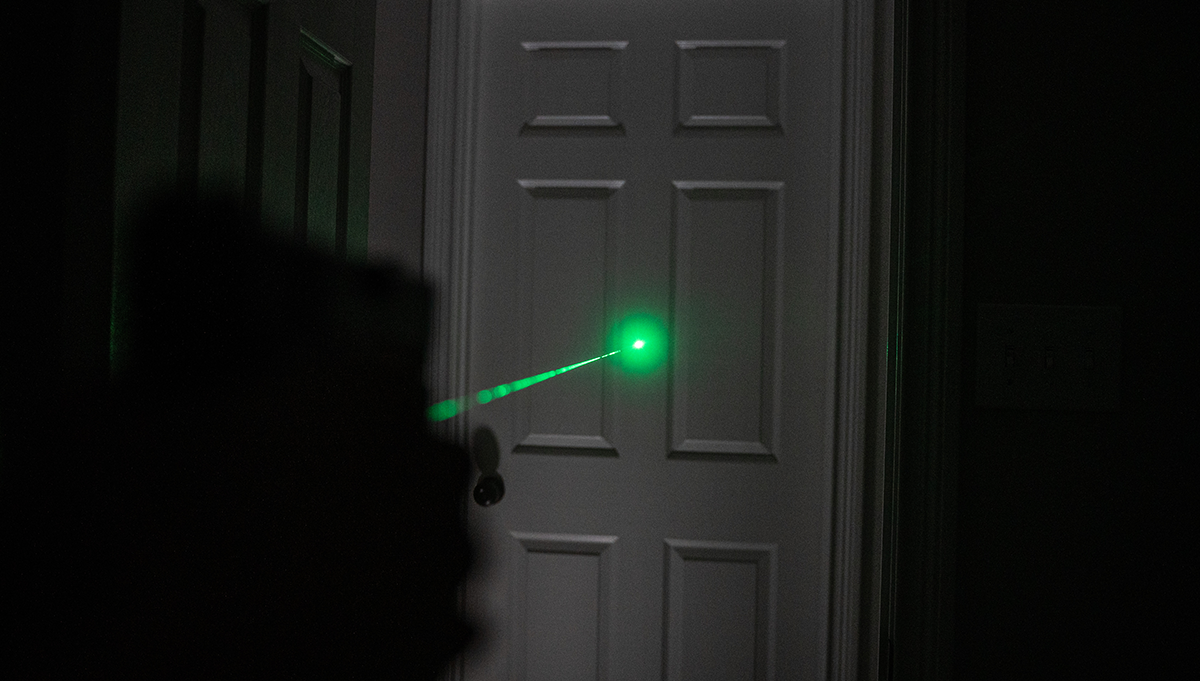
An intense beam of light will show exactly where you are aiming in the dark. Laser sights must be zeroed in like any other sights, but once they are they permit faster accurate follow-up shots than conventional iron sights alone.
Laser sights are most commonly available in red or green. (Other options are available for the colorblind.) Red lasers are more accessibly priced, and they require less electricity to operate. Green laser sights are more expensive and need more power, but their light is easier to see in the sunlight. Crimson Trace, a major manufacturer of laser sights, advises that a battery will power their red laser for four hours and their green laser for half as long.
The major drawback of a laser sight is that it makes the shooter far more visible in the dark. This could reveal your position during a home invasion, so if you would use a laser sight it is important to activate it only just before you are ready to take aim.
Reflex Sights
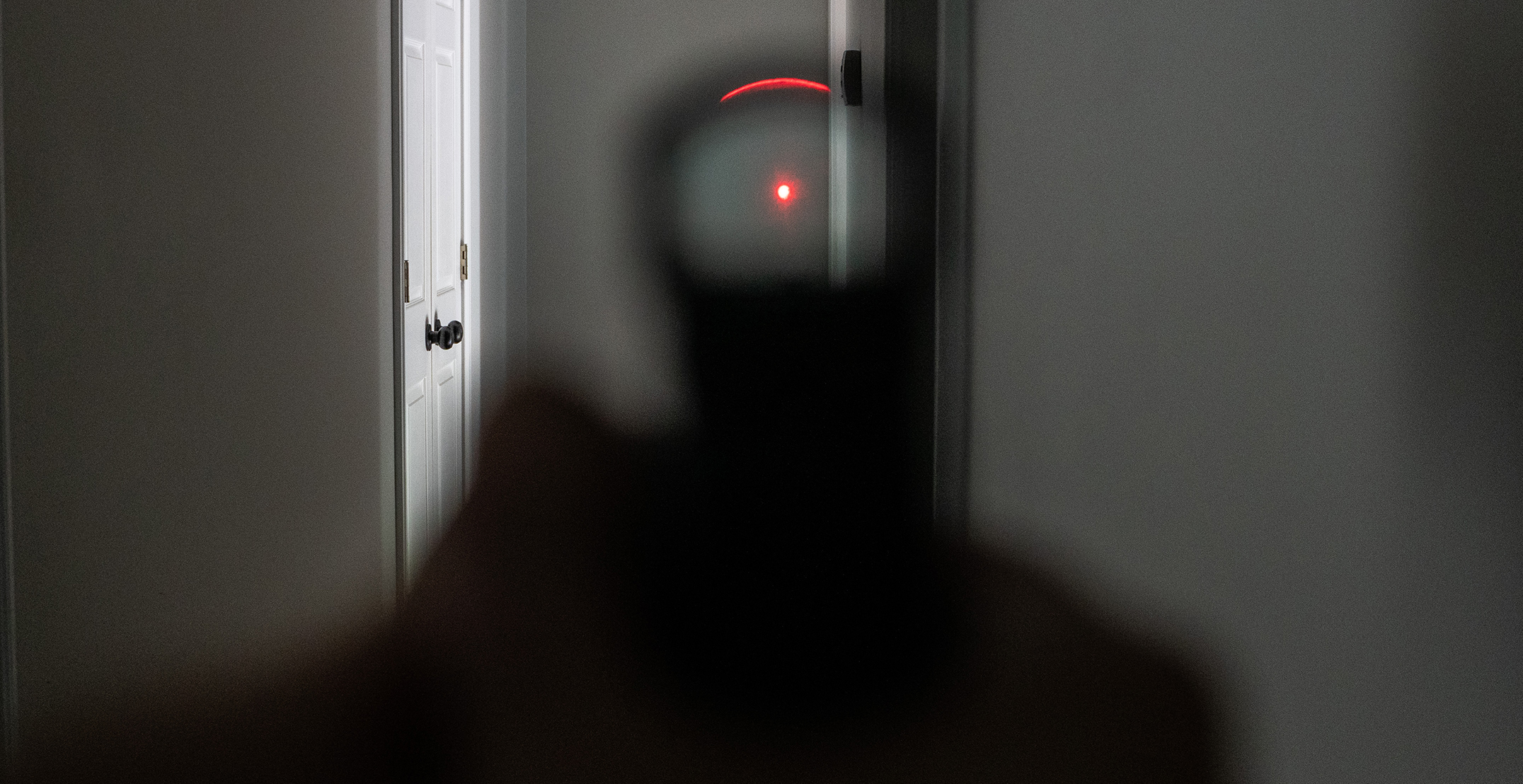
Reflex sights can utilize either a laser or a light to project a red dot over a shooter’s point of aim. This bead of light works in the light and in the dark, and is a suitable choice for self-defense at short to medium range. Reflex sights are easy to use, making them a good choice for a novice shooter who wishes to become quickly proficient with their weapon. Just make sure you get used to the distance at which you must hold a reflex sight up to your eye.
Reflex sights require a battery that must be changed regularly, although they generally use far less electricity than conventional laser sights. Reflex sights do add bulk to a weapon, making it potentially harder to unholster quickly, and their price tag may discourage budget-minded shooters from buying them.
The Takeaway
Outside of their initial expense, there is no disadvantage to outfitting your home defense or carry weapon with night sights. Night sights will not compromise your ability to take aim in the daytime — they only additionally facilitate taking aim when lighting is not optimal.
The night sight you choose ought to depend on your preferences. We would advise not relying exclusively on fiber optic or phospholuminescent sights, as they require an external source of light in order to work properly. Tritium is a great choice if you can come to terms with your sights having an expiration date. A combination of tritium and fiber optic is popular for very good reason.
While more expensive, laser and reflex sights work extremely well in the nighttime. Whether their greater cost than other types of night sights is worthwhile is a matter of your own opinion.
While some night sights make aiming easier under all circumstances, it is important to become a proficient shooter without their aid. You want your ability to defend yourself dependant on as few factors as possible, including your equipment’s functionality. Put your time in at the range, study how best to defend yourself, and complement the skills that you earn with night sights. It’s better to be safe than sorry and we have the ammo for sale to help make sure you’re ready.

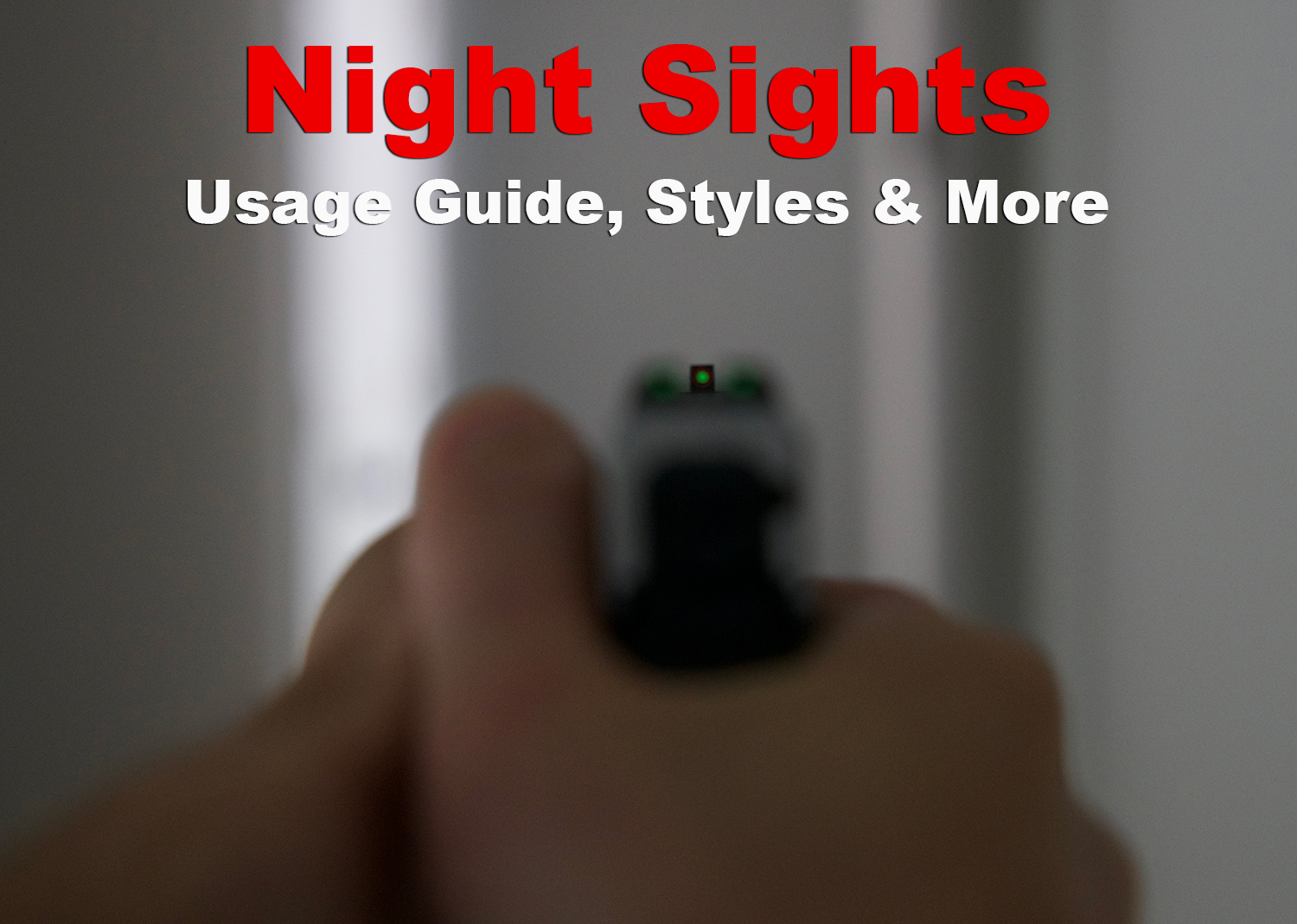
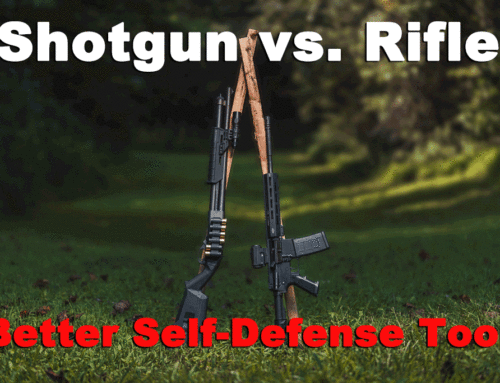
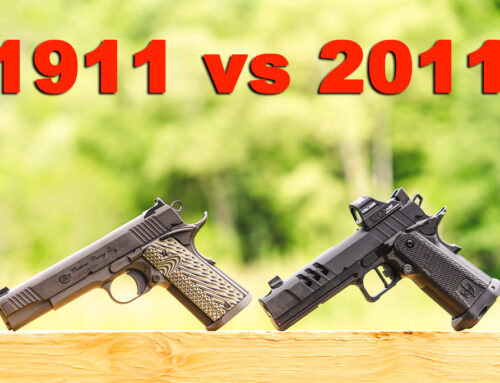

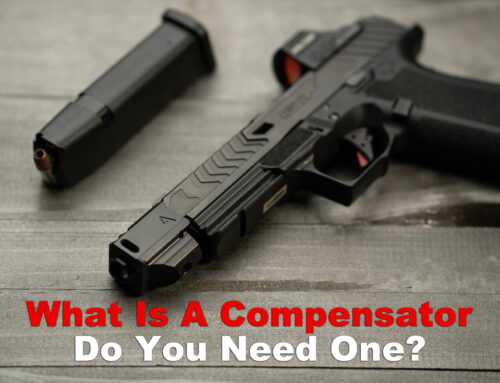
Thank You for a through and very choice oriented article; it said everything I wanted my answer to be when asked about getting Night Sites.
Very informative, I originally purchased a set of Trijicon sights for my Colt Combat Commander in 2006, never heard anything regarding half life, I can hardly see ’em now…time to replace. I think I got my money’s worth for 18 years for then $120, they’re $131 today….I still think it’s a fair trade.